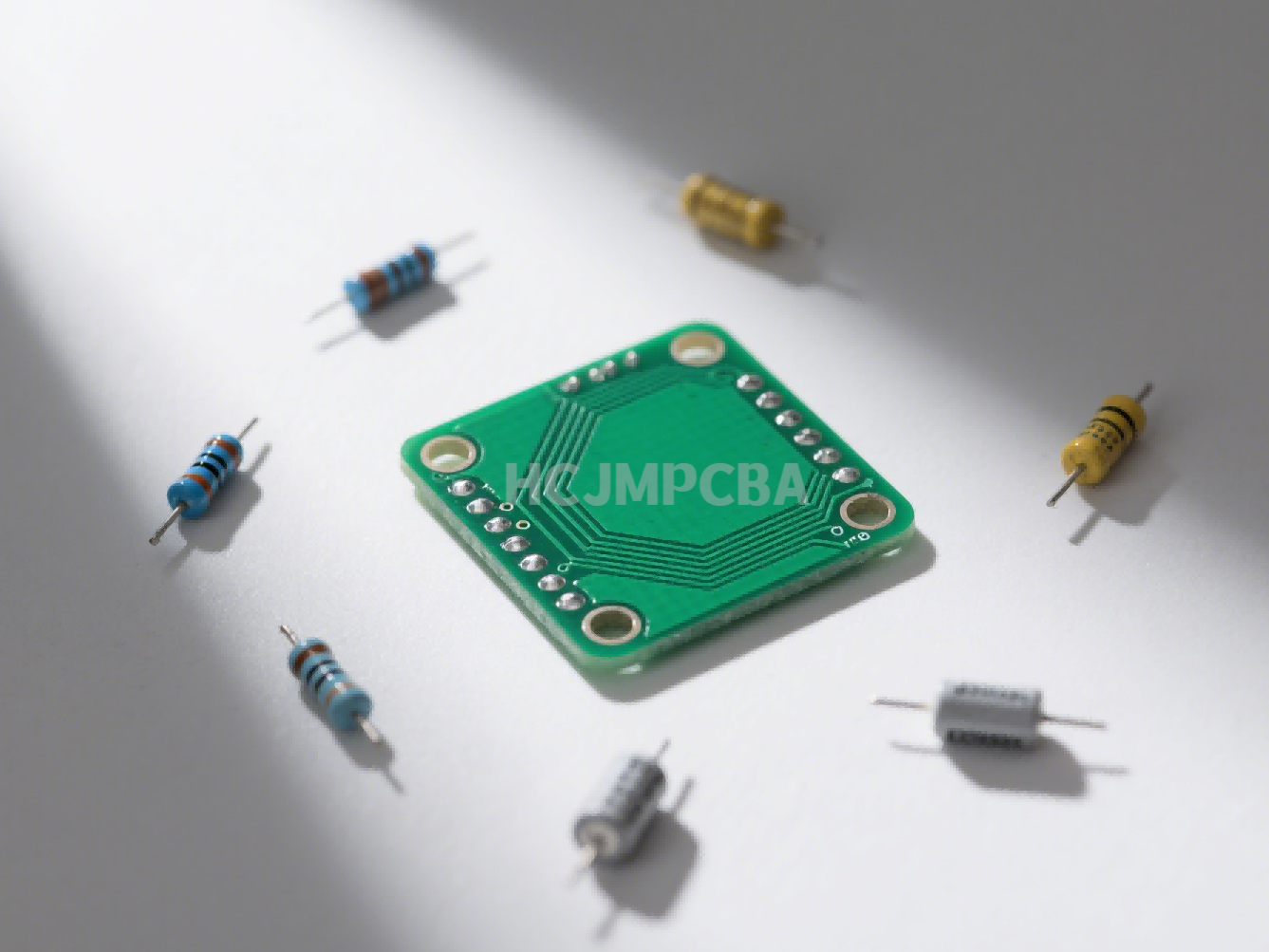What Does PCB Stand For? A Precise, Insightful Guide with ICT Tester Expertise
Discover what does PCB stand for in this comprehensive guide by HCJMPCBA. Learn about ict tester rol
What Is a Blank PCB and Parts? Comprehensive Guide for Engineers and Buyers
Table of Contents
ToggleA blank PCB and parts—also known as blank PCB, empty PCB board, blank printed circuit board, bare printed circuit board, or unprinted circuit board—form the fundamental base upon which fully assembled, populated PCBs are built. Understanding what is a blank PCB, how it differs from populated PCB, and how to make it is essential for OEM engineers, procurement specialists, and advanced buyers across North American and European electronics sectors. This guide offers a step-by-step walk-through of the blank PCB process and its advantages.
A blank PCB, or pcb blanks, is a bare printed circuit board substrate—typically made from materials like FR-4 fiberglass, polyimide, or metal-core—that has no electronic components, printed traces, or assembly. It’s sometimes referred to as an empty circuit board, empty PCB board, or circuit board blanks.
Unlike a zero PCB or perfboard which is pre-drilled and copper-paddled for ad-hoc wiring, a true blank PCB is custom-etched per design files and intended for production-level prototypes and full-scale assembly.

Substrate Material – The foundation, often FR-4 glass-epoxy, though boards may use PTFE, ceramic, or metal-core alternatives for higher frequency or thermal applications.
Copper Layer(s) – One or multiple conductive copper layers laminated to the substrate, awaiting etching.
Solder Mask & Silkscreen – Protective coatings and reference printings pre-printed even on blanks to aid later assembly.
Via and Stack-up – For multilayer blank boards, holes and inner layer stacking are included in fabrication, though the board remains blank of components.
Customizability & Flexibility – OEM engineers can iterate on board layout freely without paying for pre-populated prototypes.
Cost Efficiency & Scalability – Bulk blank PCBs cost less than fully assembled boards, enabling savings and scalability in prototyping and production.
Faster Time-to-Market – Designers can move from Gerber design to production more swiftly, particularly when integrated with flexible manufacturing workflows.
Versatile Applications – Used across industries: consumer electronics, automotive, aerospace, medical, IoT, and more.
Design & Gerber Export – Create layout files in tools like Altium or KiCad, outputting Gerber files, drill files, solder mask, and silkscreen data.
Substrate Preparation & Layer Bonding – Choose the appropriate material stack (e.g., FR-4), bond copper layers under heat/pressure for multilayer blanks.
Imaging & Etching – Apply photoresist, expose, and chemically etch copper to create circuit traces.
Drilling & Plating – CNC drills holes/vias; then plate copper to connect layers.
Solder Mask & Silkscreen – Apply layers to protect and label board.
Finishing – Optional plating (HASL, ENIG) for edge connectors; cut and clean blanks.
Ensuring electrical integrity before assembly is critical:
Visual Inspection & AOI – Identifies surface defects like scratches, misalignment, incorrect trace width using cameras or manual review.
Flying Probe Testing – Flexible, fixtureless method ideal for prototypes and low-volume runs; detects shorts, opens, impedance issues via movable probes.
Bed-of-Nails Testing – Fixture-based method for high-volume production; probes contact many points simultaneously for fast, accurate testing.
Choosing the Right Method depends on volume, complexity, cost: flying probe for flexibility, bed-of-nails for throughput.
A populated PCB (or populated printed circuit board) contains components installed and soldered.
Blank PCB is the skeleton—without assembly, allowing flexibility in design changes and lower initial cost.
Populated boards are ready for functional testing but require more upfront resources, while blanks enable modular workflows.
Search intent like where to buy PCB board, buy PCB board, pcb blank suppliers is satisfied by reliable suppliers offering customization, fast lead times, transparent pricing, and quality control. HCJMPCBA, for example, provides OEM-grade blank PCB and parts, with a wide variety of materials (FR-4, flexible, metal-core), ISO-certified processes, and engineering support tailored for European and North American markets.
(1)What is a blank PCB?
A blank PCB (also empty PCB board, bare printed circuit board) is a substrate (e.g., FR-4) with laminated copper traces but no components—a customizable foundation for further processing.
(2)What is the difference between blank PCB and populated PCB?
Blank PCBs contain no components, allowing flexibility. Populated PCBs are fully assembled and ready for functional use.
(3)How to make a blank PCB?
Design in CAD → Export Gerbers → Fabrication steps (bonding, imaging, etching, drilling, plating, solder mask).
(4)What types of blank PCB boards are available?
Include rigid, flexible, rigid-flex, high-frequency, metal-core blanks with material variation (e.g., PTFE, ceramic).
(5)What are the best testing methods for blank PCBs?
For prototypes: flying probe; for high-volume: bed-of-nails; supplement with AOI and visual inspection.
(5)Where to buy blank PCB?
Providers like HCJMPCBA offer customized blank PCB orders with quality process control and competitive pricing.
(6)What is an empty circuit board vs bare printed circuit board?
Both terms describe a PCB in its unpopulated, unfinished state awaiting components.
Understanding blank PCB and parts is essential for engineers and procurement professionals targeting OEMs or end-use electronics. From design to fabrication, testing, and sourcing, each step informs reliability, flexibility, and cost-efficiency—especially when partnering with a seasoned supplier like HCJMPCBA.
To learn more about PCBA services, please contact Guangzhou Huachuang Precision Technology Co., Ltd.
Discover what does PCB stand for in this comprehensive guide by HCJMPCBA. Learn about ict tester rol
Discover the end-to-end process to produce a multilayer circuit board, from stack‑up planning and
PCB vs PCBA explained clearly: Learn what a PCB is, how a PCBA differs, and when each makes sense. G